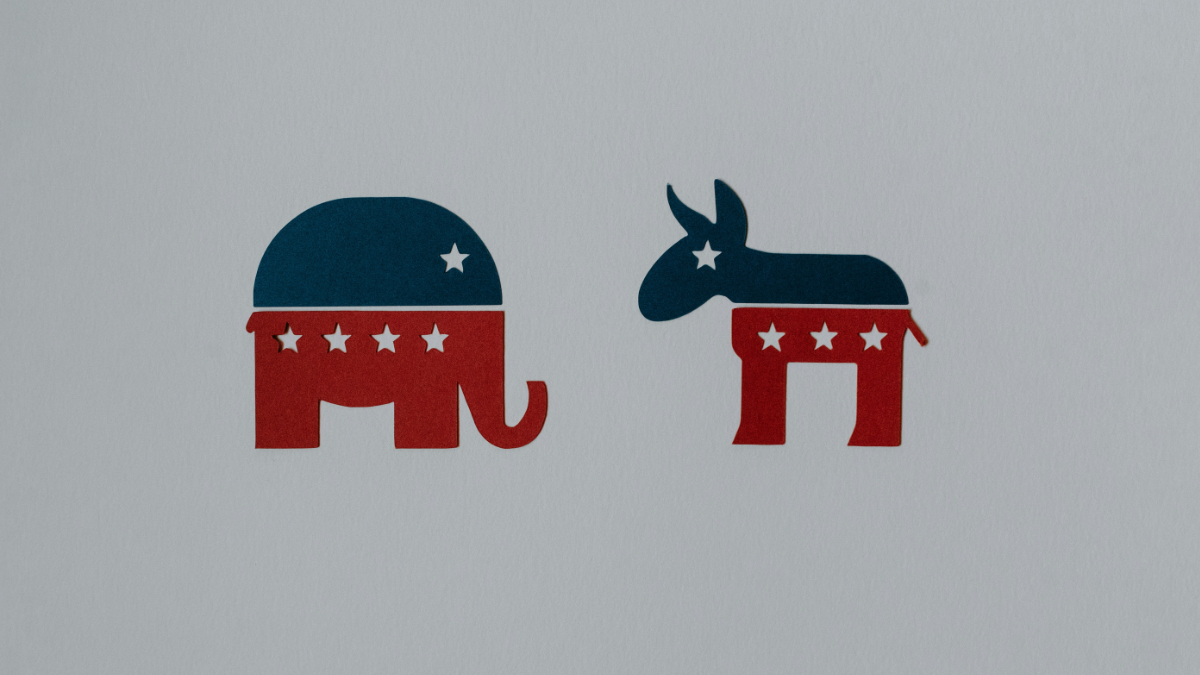The Democratic Party‘s donkey and the Republican Party’s elephant symbols have been a staple of American politics for over a century. But have you ever wondered why these specific animals were chosen to represent the two major political parties?
Historical attribution of logos for American political parties
The answer lies in the early days of American politics, when political cartoons and satire were a popular way to critique politicians and their policies. The donkey and elephant symbols were first used in the 1828 and 1860 presidential campaigns, respectively, and were initially meant to mock the candidates.
An anti-Democratic paper at the time nicknamed the forerunner of the Democratic party a donkey in a blatant attempt to mock him, Andrew Jackson, and Thomas Nast drew the elephant symbol for the Republican party to represent in the 1874 cartoon, “Third Term Panic,” just to show how messy American politics was. However, the parties soon embraced the symbols and turned them into powerful representations of their values and beliefs.
The Democratic Party’s donkey symbol originated in the 1828 presidential campaign of Andrew Jackson. Jackson’s opponents called him a “jackass” for his stubbornness and refusal to back down from a fight. However, Jackson embraced the term and used it to his advantage, even featuring a donkey in his campaign literature. Over time, the donkey became a symbol of the Democratic Party’s values: strong-willed, hardworking, and stubborn in the face of adversity.
The Republican Party’s elephant symbol has its roots in the 1860 presidential campaign of Abraham Lincoln. Lincoln’s supporters called him the “Great Elephant” due to his strength, wisdom, and longevity. The symbol was further popularized by political cartoonist Thomas Nast, who drew an elephant as a symbol of the Republican Party in the 1870s. The elephant then became a symbol of the Republican Party’s values: strength, wisdom, and longevity.
Integration Into Political Culture
Today, these symbols are an integral part of American political culture. They are used in campaign literature, political cartoons, and even in the names of political organizations. The donkey and elephant have become synonymous with the Democratic and Republican parties, respectively.
Despite their origins as derogatory terms, the donkey and elephant have been embraced by both parties as symbols of their values and strengths. They serve as a reminder of the rich history and traditions of American politics and continue to play a significant role in shaping the country’s political landscape.
Differences and What They Represent
In addition to their historical significance, the donkey and elephant symbols also represent the fundamental differences between the two parties. The Democratic Party’s donkey symbolizes their commitment to hard work, determination, and progress, while the Republican Party’s elephant represents their values of strength, wisdom, and longevity.
The use of animals as symbols in politics is not unique to the United States. Many countries have adopted animals as symbols of their political parties or movements. For example, the Liberal Party of Canada uses the eagle as its symbol, while the New Democratic Party uses the turtle.

